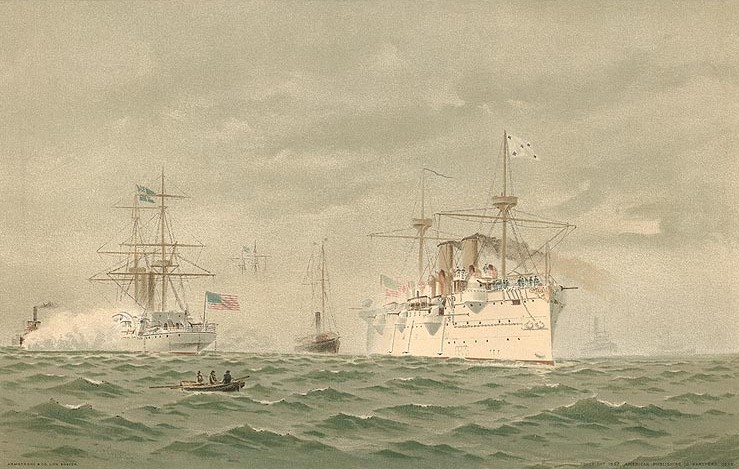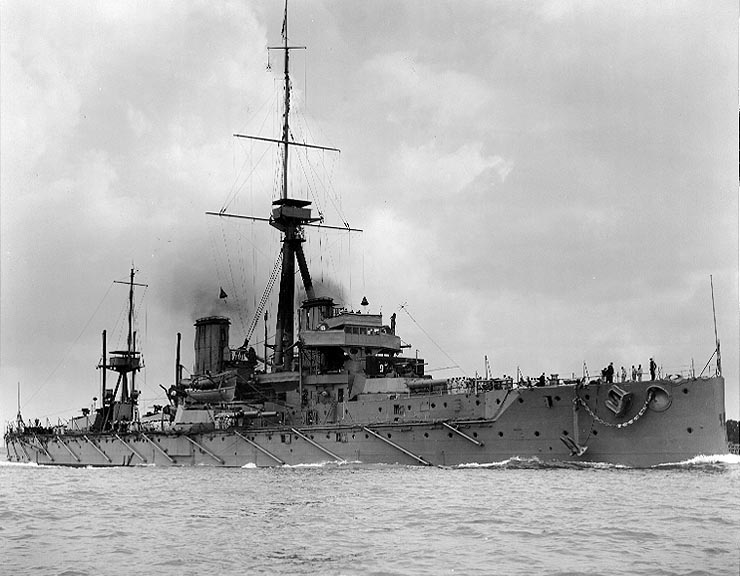|
Oscar Parkes
Oscar Parkes (8 October 1885 – 24 June 1958) was a Royal Navy surgeon, naval historian, marine artist, and editor of ''Jane's Fighting Ships'' from 1918 to 1935. He was an associate of the Royal Institution of Naval Architects. The Imperial War Museum and the National Maritime Museum have permanent collections of his artwork. His book ''British Battleships: "Warrior", 1860 to "Vanguard", 1950. A History of Design, Construction and Armament'' is regarded as a definitive source. Early life Parkes was born in Handsworth, Birmingham, England on 18 October 1885, the son of physician W. E. Parkes. He was educated at Rydal Mount, Colwyn Bay, and Berkhamsted, and Parkes attended the University of Birmingham, graduating M.B., Ch.B. in 1914. As a boy, he became fascinated by warships from all nations, particularly with their design and appearance. At the age of four, a picture of the American cruiser on a biscuit tin sparked his imagination. In 1900, when he was 15 years old, Pa ... [...More Info...] [...Related Items...] OR: [Wikipedia] [Google] [Baidu] |
Handsworth, West Midlands
Handsworth () is a suburb and an inner-city area of Birmingham in the West Midlands. Historically in Staffordshire, Handsworth lies just outside Birmingham City Centre and near the town of Smethwick. History The name ''Handsworth'' originates from its Saxon owner Hondes and the Old English word ''weorthing'', meaning farm or estate. It was recorded in the Domesday Survey of 1086, as a holding of William Fitz-Ansculf, the Lord of Dudley, although at that time it would only have been a very small village surrounded by farmland and extensive woodland. Historically in the county of Staffordshire, it remained a small village from the 13th century to the 18th century. Accommodation was built for factory workers, the village quickly grew, and in 1851, more than 6,000 people were living in the township. In that year, work began to build St James' Church. Later St Michael's Church was built as a daughter church to St James'. In the census of 1881, the town was recorded as havin ... [...More Info...] [...Related Items...] OR: [Wikipedia] [Google] [Baidu] |
Birmingham General Hospital
Birmingham General Hospital was a teaching hospital in Birmingham, England, founded in 1779 and closed in the mid-1990s. History Summer Lane In 1765, a committee for a proposed hospital, formed by John Ash and supported by Sir Lister Holte, 5th Baronet, the Earl of Bradford, Samuel Garbett, Sir Henry Gough, Charles Adderley, Matthew Boulton, John Baskerville, Sampson Lloyd and others, purchased: from a Mrs Dolphin, for £120 per acre. (Walmore Lane is now Lancaster Street.) However, work to erect the new hospital on that land stopped through lack of funds in 1766. Eventually, much of its funds came from the Birmingham Triennial Music Festival, the first of which was held over three days in September 1768, and which continued to fund the hospital into the 20th century. The hospital finally opened on 20 September 1779, giving its name to Hospital Street. About 200 patients were treated in its first three months of operation, even though the 40 beds were fewer than ha ... [...More Info...] [...Related Items...] OR: [Wikipedia] [Google] [Baidu] |
Knightsbridge
Knightsbridge is a residential and retail district in central London, south of Hyde Park, London, Hyde Park. It is identified in the London Plan as one of two international retail centres in London, alongside the West End of London, West End. Toponymy Knightsbridge is an ancient name, spelt in a variety of ways in Saxon and Old English, such as ''Cnihtebricge'' (c. 1050); ''Knichtebrig'' (1235); ''Cnichtebrugge'' (13th century); and ''Knyghtesbrugg'' (1364). The meaning is "bridge of the young men or retainers," from the Old English ''cniht'' (genitive case plural –a) and ''brycg''. ''Cniht'', in pre-Norman days, did not have the later meaning of a warrior on horseback, but simply meant a youth. The allusion may be to a place where ''cnihtas'' congregated: bridges and wells seem always to have been favourite gathering places of young people, and the original bridge was where one of the old roads to the west crossed the River Westbourne. However, there is possibly a more spec ... [...More Info...] [...Related Items...] OR: [Wikipedia] [Google] [Baidu] |
United States Congress
The United States Congress is the legislature of the federal government of the United States. It is bicameral, composed of a lower body, the House of Representatives, and an upper body, the Senate. It meets in the U.S. Capitol in Washington, D.C. Senators and representatives are chosen through direct election, though vacancies in the Senate may be filled by a governor's appointment. Congress has 535 voting members: 100 senators and 435 representatives. The U.S. vice president has a vote in the Senate only when senators are evenly divided. The House of Representatives has six non-voting members. The sitting of a Congress is for a two-year term, at present, beginning every other January. Elections are held every even-numbered year on Election Day. The members of the House of Representatives are elected for the two-year term of a Congress. The Reapportionment Act of 1929 establishes that there be 435 representatives and the Uniform Congressional Redistricting Act requires ... [...More Info...] [...Related Items...] OR: [Wikipedia] [Google] [Baidu] |
Sampson Low, Marston & Company
Sampson Low (18 November 1797 – 16 April 1886) was a bookseller and publisher in London in the 19th century. Early years Born in London in 1797, he was the son of Sampson Low, printer and publisher, of Berwick Street, Soho. He served a short apprenticeship with Lionel Booth, the proprietor of a circulating library, and spent a few years in the house of Longman & Co. Low began his own business in 1819 at 42 Lamb's Conduit Street, as a bookseller and stationer, with a circulating library attached. His reading-room was the resort of many literary men, lawyers, and politicians. Sampson Low, Son and Company In 1848, Low and his eldest son Sampson Jr. opened a publishing office at the corner of Red Lion Court, Fleet Street. In 1852 they moved to 47 (and later to 14) Ludgate Hill, where, with the aid of David Bogue, an American department was opened. In 1856 Edward Marston became a partner, and Bogue retired. The firm removed in 1867 to 188 Fleet Street, in 1887 to St. Dunstan's H ... [...More Info...] [...Related Items...] OR: [Wikipedia] [Google] [Baidu] |
Royal Naval Hospital, Stonehouse
The Royal Naval Hospital, Stonehouse was a medical facility for naval officers and other ranks at Stonehouse, Plymouth. History The naval hospital was built between 1758 and 1765 to a design by the little-known Alexander Rovehead. The design was influential in its time: its pattern of detached wards (arranged so as to maximise ventilation and minimise spread of infection) foreshadows the 'pavilion' style of hospital building which was popularised by Florence Nightingale a century later. The site for the hospital was formerly known as the mill fields (after the nearby tide mills on Stonehouse Creek). Towards the end of the century, Stoke Military Hospital was built by the Army, facing the naval hospital directly across the creek. The hospital closed in 1995; it is now a gated residential complex called The Millfields. The site contains over 20 listed buildings and structures. Description The hospital housed 1,200 patients in sixty wards, its ten ward blocks being arranged aroun ... [...More Info...] [...Related Items...] OR: [Wikipedia] [Google] [Baidu] |
Medway Maritime Hospital
Medway Maritime Hospital is a general hospital in Gillingham, England within the NHS South East Coast. It is run by Medway NHS Foundation Trust. It is Kent's largest and busiest hospital, dealing with around 400,000 patients annually. It was founded as the Royal Naval Hospital in 1902 for the Naval personnel at the Chatham Dockyard. The hospital was where the Piano Man was taken after being found wandering in a soaking wet suit and tie. History The hospital was built as a replacement Royal Naval Hospital for the 252 bed Melville Hospital (Naval), which was not large enough to deal with the increasing numbers of Naval personnel moving into Chatham; it was opened by King Edward VII on 26 July 1905. At that time the main corridor was almost 1,000 feet long. The hospital's large Grade II listed water tower, which acts as a local landmark over Gillingham, was built around the same time. On 15 January 1961 the hospital was transferred by the Admiralty to the NHS and became part of the ... [...More Info...] [...Related Items...] OR: [Wikipedia] [Google] [Baidu] |
Order Of The British Empire
The Most Excellent Order of the British Empire is a British order of chivalry, rewarding contributions to the arts and sciences, work with charitable and welfare organisations, and public service outside the civil service. It was established on 4 June 1917 by King George V and comprises five classes across both civil and military divisions, the most senior two of which make the recipient either a knight if male or dame if female. There is also the related British Empire Medal, whose recipients are affiliated with, but not members of, the order. Recommendations for appointments to the Order of the British Empire were originally made on the nomination of the United Kingdom, the self-governing Dominions of the Empire (later Commonwealth) and the Viceroy of India. Nominations continue today from Commonwealth countries that participate in recommending British honours. Most Commonwealth countries ceased recommendations for appointments to the Order of the British Empire when they ... [...More Info...] [...Related Items...] OR: [Wikipedia] [Google] [Baidu] |
High Seas Fleet
The High Seas Fleet (''Hochseeflotte'') was the battle fleet of the German Imperial Navy and saw action during the First World War. The formation was created in February 1907, when the Home Fleet (''Heimatflotte'') was renamed as the High Seas Fleet. Admiral Alfred von Tirpitz was the architect of the fleet; he envisioned a force powerful enough to challenge the Royal Navy's predominance. Kaiser Wilhelm II, the German Emperor, championed the fleet as the instrument by which he would seize overseas possessions and make Germany a global power. By concentrating a powerful battle fleet in the North Sea while the Royal Navy was required to disperse its forces around the British Empire, Tirpitz believed Germany could achieve a balance of force that could seriously damage British naval hegemony. This was the heart of Tirpitz's "Risk Theory", which held that Britain would not challenge Germany if the latter's fleet posed such a significant threat to its own. The primary component of the ... [...More Info...] [...Related Items...] OR: [Wikipedia] [Google] [Baidu] |
Operation ZZ
The High Seas Fleet (''Hochseeflotte'') was the battle fleet of the German Empire, German German Imperial Navy, Imperial Navy and saw action during the World War I, First World War. The formation was created in February 1907, when the Home Fleet (''Heimatflotte'') was renamed as the High Seas Fleet. Admiral Alfred von Tirpitz was the architect of the fleet; he envisioned a force powerful enough to challenge the Royal Navy's predominance. Kaiser Wilhelm II, the German Emperor, championed the fleet as the instrument by which he would seize overseas possessions and make Germany a global power. By concentrating a powerful battle fleet in the North Sea while the Royal Navy was required to disperse its forces around the British Empire, Tirpitz believed Germany could achieve a balance of force that could seriously damage British naval hegemony. This was the heart of Tirpitz's "Risk Theory", which held that Britain would not challenge Germany if the latter's fleet posed such a significant ... [...More Info...] [...Related Items...] OR: [Wikipedia] [Google] [Baidu] |





.jpg)


